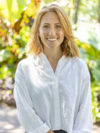

Digitalization can play a pivotal role in helping fashion and sporting goods brands scale and improve environmental footprinting, meet regulatory expectations, accelerate sustainability progress and drive industry-wide collaboration.
In brief:
- Digitalization is playing a pivotal role in helping fashion and sporting goods brands scale and improve environmental footprinting, meet regulatory expectations, accelerate sustainability progress and drive industry-wide collaboration.
- While transforming the supply chain is a massive task, businesses can utilize digital tools to navigate the complex landscape with more accuracy, heightened visibility and traceability in their production processes to achieve the transparency that both regulators and consumers are demanding.
- AI-driven solutions are gaining increasing importance, enhancing the efficiency and scalability of digitalization efforts. By automating complex processes such as emissions tracking and data integration, AI can enable companies to manage sustainability efforts with greater speed and precision.
- While implementing a digital tool is critical, it’s just the start — not a magic bullet. Only with a meaningful, context-based data strategy can companies leverage the full potential of digitalization and truly move the needle.
As the climate clock ticks louder, digitalization is emerging as a game-changer for businesses aiming to hit ambitious sustainability targets and keep pace with new regulations. In the fashion and sporting goods industry, upcoming laws in the European Union are enforcing new rules for reporting to mandate requirements in social and environmental disclosures. These new regulations signal that sustainability and social responsibility aren’t just nice-to-haves — they’re essential for doing business. To meet this moment, companies must adopt reliable methods to measure their impact across the supply chain with greater precision to make more informed decisions, as well as track their efforts and progress efficiently.
The sustainability journey is challenging, but digital tools that collect, manage and analyze data are making it easier. While accessing high-quality data in the fashion and sporting goods industry has historically been a struggle, new technological innovations offer more dependable tools to help companies evaluate their sustainability performance with pinpoint accuracy.
Digitalization also strengthens connections with partners and suppliers along the value chain — key to unlocking greater traceability. When companies leverage digitalization, they can significantly improve transparency to establish credibility with regulatory bodies and consumers alike.
From product footprint to portfolio assessment in minutes
Digital tools are essential for accurate environmental footprinting. By operationalizing high-quality data collection, processing and consolidation, digitalization guarantees more streamlined assessments. The principle of “Garbage In, Garbage Out” underscores the importance of more accurate data inputs; without them, even the most advanced digital tools won’t deliver meaningful insights.
This level of accuracy becomes even more imperative when you consider the vast range of products in a fashion brand’s portfolio. With sustainability transformation extending across entire product lines, brands need smart and automated solutions. Manual calculations simply can’t keep up with hundreds or thousands of rapidly-evolving product footprints. A tool that provides dynamic, real-time data measurement at the product and portfolio level suddenly becomes critical, giving companies the agility to move faster in assessing improvements at scale.
AI-driven solutions act as accelerators of digitalization, helping companies scale their sustainability efforts more efficiently. When thoughtfully integrated into sustainability strategies, AI can deliver measurable benefits such as cost savings, improved process efficiency, and faster decision-making. By automating routine processes like emissions tracking and data integration, AI enables experts and key decision-makers to focus on strategic tasks such as interpreting results and designing effective impact reduction strategies.
AI delivers value across key stages of the sustainability journey:
- Data collection: Streamlining capture, processing, and consolidation while addressing gaps;
- Impact assessment: Supporting tailored emission factor calculations under expert supervision;
- Insights generation: Producing actionable recommendations to drive impact reduction strategies.
While AI accelerates progress and enhances efficiency, its effectiveness relies on expert supervision and adherence to rigorous methodological frameworks to ensure accurate and meaningful outcomes. Thoughtful integration of AI allows companies to unlock its potential as a “supercharger,” complementing human expertise to meet sustainability goals.
One of the key benefits digital tools offer is maintaining data quality by automating the validation and correction of inputs, reducing the risk of errors and ensuring that information used for reporting is not only accurate, but consistent. Additionally, regular updates and audits of data systems further maintain the integrity of the data. By standardizing data collection and reporting, digitalization enables consistency and comparability, allowing brands to benchmark their performance against industry peers.
In short, digital solutions enable companies to track and improve their product portfolios with greater efficiency, providing a scalable foundation for taking meaningful action. While AI has the potential to act as a supercharger within these systems, most off-the-shelf tools currently lack the capability to fully deliver on this promise. However, by integrating digital solutions tailored to specific needs, companies can streamline data collection and analysis, ensure compliance with increasingly stringent regulations (e.g., France’s environmental scoring, the EU’s Digital Product Passport, and Ecodesign for Sustainable Product’s Regulation), and overcome the limitations of manual approaches.
Staying ahead of regulatory changes
As regulatory bodies increasingly mandate detailed environmental, social, and governance (ESG) reporting with more comprehensive frameworks, data quality and integrity are becoming a critical necessity. As regulations evolve, what’s voluntary today is likely to become mandatory tomorrow, so adopting digital tools now ensures that a company is fit for the future.
For example, for companies to comply with already-approved laws in the European Union such as the Corporate Sustainability Reporting Directive (CSRD), they must provide detailed disclosures on ESG matters. This includes greenhouse gas emissions, supply chain transparency and labor practices, all of which require accurate footprinting. Additionally, the CSRD will eventually include a more elaborate framework to standardize reporting, demanding accountability from companies to demonstrate responsible social and environmental practices – with the data to back it up.
Additionally, the Green Claims Directive will require companies to provide third-party verified, scientific proof to back their sustainability claims. If, for example, a brand claims that their product has “less environmental impact”, they must provide specificity and evidence to prove they’re not greenwashing or misleading consumers.
To guide the industry in complying with these legislations, the European Commission has also proposed the Product Environmental Footprint (PEF), a harmonized methodology to calculate the environmental impact of products to make standardized product labeling possible. By establishing a unified set of standards to calculate the footprint of products, PEF aims to improve the credibility of sustainability claims.
As regulations evolve, companies must stay agile, so upgrading data systems will be essential. With a patchwork of laws across different markets, digital solutions allow companies to extract the necessary data to comply with varied regulations, while maintaining a consistent database and approach. With these tools, companies can stay ahead of regulatory changes, ensuring they remain compliant and ready to meet new requirements.
Bridging the supply chain gap
Once data collection is set, how can companies use it effectively? The challenge is to ensure that the data is being used strategically — connecting and informing all aspects of a company’s sustainability efforts to enable better, more informed decision-making.
On average, companies generally have a good handle on their footprint at the corporate level, but they often lack visibility across their supply chain. When product data and supply chain data aren’t communicating with one another, companies not only miss out on the full picture of their sustainability strategy, but they’re also under-prepared to meet regulatory requirements. While the fashion industry is making strides in this area, there is still room to learn from other sectors, like the food industry, which has a more mature approach to tracking supply chain emissions and corporate footprinting overall.
Digitalization, combined with strategic advisory, helps bridge these informational gaps for better visibility across supply chains. By providing real-time data on every stage of production, from raw material sourcing to manufacturing processes and distribution channels, digital tools enable brands to monitor and mitigate their environmental footprint effectively.
Driving meaningful supplier engagement and improving traceability
While digitalization alone doesn’t guarantee perfect accuracy, it plays a crucial role in fostering more meaningful supplier engagement, which significantly boosts data quality and collection, improving traceability.
Digital tools can help companies create stronger partnerships with their suppliers by streamlining communication and information sharing, enabling real-time data exchange to optimize efficiency and create more responsive supply chain operations. Enhanced communication also opens up a reciprocal dialogue, where suppliers are better equipped to negotiate, secure deals and advantages and provide feedback — all of which build trust and loyalty.
When companies invest in building relationships with their suppliers, they create a supportive environment for shared investments and collaboration, leading to long-term partnerships within a mutually beneficial ecosystem. Building strong relationships with farmers, growers, mills and other suppliers encourages each participant to contribute the necessary information at every stage of the production process to achieve traceability, giving companies an accurate view of the realities on the ground.
Although the supply chain is vastly global and involves numerous actors, digitalization enables improved connectivity, communication and alignment, driving sustainability goals, fostering a sense of community ripe for collective action.
Facilitating industry-wide collaboration to scale sustainability efforts
Digitalization also enables industry-wide collaboration, which scales sustainability initiatives. Digital learning platforms such as Fashion Leap for Climate provide climate education and a space for brands to share best practices, innovations and strategies on science-based targets, encouraging open-source initiatives and collaborative projects. By pooling resources and knowledge through digital tools, companies can tackle shared challenges more effectively, accelerate progress and enable cost-effective scaling and adoption across companies of all sizes, including SMEs.
Digital footprinting can also support the creation of trusted supplier networks, allowing companies to share environmental data securely with a wide range of stakeholders (e.g., blockchain platforms can establish a secure, permission-based ledger to enhance traceability). Working toward permissioned information sharing will accelerate the decarbonization of the fashion industry and promote data transparency.
These collaborative efforts drive systemic change, setting new standards for social and environmental responsibility across the industry.
Paving the way for sustainability in fashion and sporting goods
Digitalization plays a pivotal role in helping fashion and sporting goods brands meet upcoming EU regulations, achieve sustainability goals and drive industry-wide progress. While transforming the supply chain is a gargantuan task, businesses can rely on digital tools to navigate the complex landscape with accuracy, visibility and traceability into their production processes to achieve the transparency that both regulatory bodies and consumers are demanding.
But adopting even the most robust and powerful digital tool is only a first step. Once a company commits to embarking on a digital transformation, it must ensure that tools are tailored to its specific needs and context. Without the well-designed data strategy to connect all the dots, digital tools alone can’t guarantee the collection of meaningful information. Selecting the right sustainability partner ensures that methodologies reflect a company’s unique circumstances and are embedded into their data systems. For instance, linking sustainability data with procurement data is crucial to produce outputs that truly represent a company’s operational reality.
As expectations for accountability grow, adopting digital solutions — enhanced by AI where appropriate — alongside a robust data strategy is an essential move for companies striving to build trust, meaningfully contribute to environmental action and future-proof their business.
Latest resources

How digitalization is unlocking a new era of sustainability in fashion...
While digitalization alone doesn’t guarantee perfect accuracy, it plays a crucial role in many ways like fostering more meaningful supplier engagement, boosting data quality and...

Why an environmental sustainability strategy without nature is incomplete
Businesses have an essential role to play in reversing the trend of nature loss — and a lot to lose from inaction.

Purpose: The 5th ‘P’ in the sustainable food + beverage marketing ...
The 5th 'P' in the marketing mix, purpose, adds depth to product, price, place, and promotion, enabling greater sustainability and impact.































































































































































































































































































 There is another transformative debate taking place in London this week. Despite being overshadowed by the Brexit, some of the world’s business leaders, economists, experts and diplomats have gathered at the
There is another transformative debate taking place in London this week. Despite being overshadowed by the Brexit, some of the world’s business leaders, economists, experts and diplomats have gathered at the  Leaders are committing to set SBTs. To date, 168 companies have signed up and the initiative is gaining momentum. A company must implement a full corporate footprint and assess the appropriateness of the climate commitments made.
Leaders are committing to set SBTs. To date, 168 companies have signed up and the initiative is gaining momentum. A company must implement a full corporate footprint and assess the appropriateness of the climate commitments made.